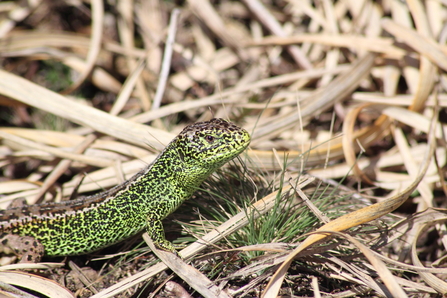The funding awarded to a partnership led by Natural England as part of the European Union’s LIFE programme will help deliver a major conservation project to explore how to re-establish the natural movement within dunes and create the conditions that some of our rarest wildlife relies upon.
Healthy sand dunes with moving sand are a sanctuary for endangered plants and animals like the natterjack toad, dune gentian and sand lizard. However these habitats are currently being smothered and fixed by a tide of invasive non-native plants turning it into scrubland. Sand dunes are now one of the most at risk habitats in Europe. Only 20,000 hectares remain across England and Wales – an area around half the size of the Isle of Wight.
Our sand dunes don’t just provide wildlife with a home, and us with such experiences but they act as a natural flood defence.
The DuneLIFE project will help Natural England improve the condition of key sand dune sites in Lincolnshire, Dorset, Cornwall, Devon, Merseyside and Cumbria by tackling the root causes of decline. The scheme will:
- Deliver a programme of removal of invasive species to rebalance the natural processes of dune colonisation
- Restore sand dunes and dune slacks
- Create bare sand patches by turf stripping and sand scraping
- Encourage more people to access and enjoy dunes and take part in their conservation
Natural England are working in partnership with The Wildlife Trusts, Plantlife, and National Trust to deliver this ambitious and innovative project.
Stephanie Hilborne OBE, CEO of The Wildlife Trusts, said:
“Everyone should have the opportunity to experience the joy of standing amidst a sand dune. These are wild places and when you stand amongst the marram grass and sea holly, listening to the sound of the surf and the call of the stonechats you may look up to see a raven wheeling above.
“Our sand dunes don’t just provide wildlife with a home, and us with such experiences but they act as a natural flood defence. So this partnership is an exciting new development given that so many of our dunes are in trouble.
“We are looking forward to helping people breathe new life in to our dunes from Cumbria to Cornwall and across to Lincolnshire. Thanks to funding from the EU LIFE programme there is a great chance to help many people work together to change the natural world for the better.”

